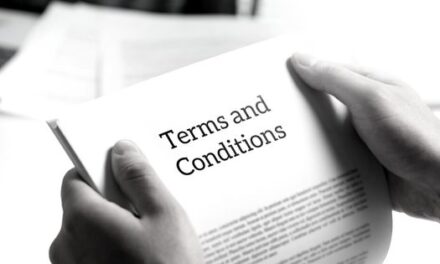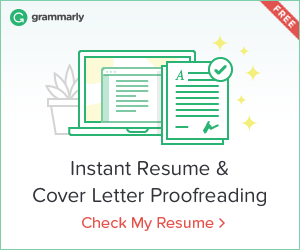Email marketing continues to be significant in 2021, and the way you conduct your campaigns can make or break your clickthrough rates and conversions. And low numbers on these metrics mean fewer prospects turning into customers.
This leads us to the question: What can you do to stay relevant or avoid the dreaded spam folder?

Creating Email Marketing Campaigns that Convert in 2021
2020 changed the way we do business. With the pandemic and lockdowns, enterprises have moved to take-out orders, curb-side deliveries, and online selling. And these changes have led to high demands for digital marketing to continue to do its magic.
Since most customers are shopping and placing orders from home, a business’ ability to attract these customers via digital marketing is crucial. We’re talking about email marketing, content marketing, social media ads, newsletters, and more. And as companies shift focus to sending out posts and emails with promotions, new products, and deals, your content quality has never been more critical.
So, what do your email marketing campaigns need in 2021? And how can you retain customers and bring new ones on board without coming on too strong?
Here are six ways to run effective email marketing campaigns:
Focus on Quality of Emails Instead of Quantity
The top 3 reasons people choose to unsubscribe from an email list: too many emails (59%), information is no longer relevant (43%), or don’t recognise brand or remember signing up (43%) (OptinMonster)
With most shoppers switching to online shopping, you will notice a spike in newsletter and email sign-ups. This shows that these customers or potential shoppers are interested in your product or service and want to know more. However, it does not mean they’ve given you permission to email them 3-4 times a week.
Resist the urge to send too many emails. Since digital marketing is the primary source of advertising and promoting for some businesses, the tendency is to send multiple emails with deals and promotions, creating an urgency for action. Think: “Only Today” deals, “Last Call” emails, or “Expires within [00:00]” deals.
As a result of this pandemic, customers expect more sales, more deals, and better access to products and services. And so, it is less likely that they will give in to email pressure. Overly-aggressive emailing can quickly put customers and potential prospects off and lead them to unsubscribe or report your emails as spam. And no business wants that.
The emphasis should always be on the best ways to connect with your customers. How can you relate to them and appear relevant? It’s simple: if your target audience does not see any significance in your product, there’s no need for them to make a purchase. Your email copy is where you develop that relationship between product and customer and, by doing so, create a need for the product.
Keep Deliverability Issues in Mind
Furthermore, an abundance of emails can lead to deliverability issues where mailbox providers consider your email sending as suspicious and potential spam. This affects your deliverability and moves your emails to the trash or spam folder, away from the customer’s eye. So, how do you focus instead on the quality of your emails?
Consider these:
- Good copy and quality reviews and testimonials go a long way.
- How can you get the word across without adding any pressure? How can you convince your reader about their need for your product without outright saying, “Hey, you need this!”?
- Additionally, building an inclusive community can prove useful. By inclusivity, we mean sharing insider information about how your company runs and how your employees are doing. What’s their routine? What news and updates can you share with your subscribers?
- Lastly, include personalisation. Let’s face it. Emails that begin with the phrase “Dear Customer” usually go straight to the trash. About 63% of customers despise generic email blasts (Marketo). Capture your reader’s attention instead by using their name, providing them recommendations based on their search history or past purchases, and so on. Make their shopping experience personal and relevant.
Invest in Email Verification
Email verification tools verify your email list—they identify undeliverable email addresses such as fake or misspelled email ids. Sending email campaigns to fake, inactive, or wrong email addresses is a waste of time and can damage your sender reputation (that indicates to an inbox whether your email is spam or not) over time.
Often, users that want information or deals quickly but don’t want to give out personal information use fake addresses. Other times, users create new email accounts, and their old addresses go inactive. Email verification ensures you are sending your campaigns to real people and deliverable addresses.
Furthermore, if you have users subscribe to receive information such as a PDF, white paper, eBook, or newspaper articles, then email verification can identify fake email addresses and keep your metrics accurate. You can make entering a valid email id a requirement for joining the mailing list, accessing content, or making a purchase.
Removing email addresses from your campaign list may be hard but remember that they are invalid, after all. If you rely heavily on email marketing campaigns, you want to make sure you send emails to deliverable addresses and that your campaigns’ metrics are valid. And using email verification tools is a good way to ensure such accuracy.
Implement Email Segment
This is one of the first things you do when you start creating email marketing campaigns. Segmenting refers to breaking up your email list into subsections or categories based on various specifics. For example, you can create different sections based on interests, demographics, preferences, product categories, and so on. You can use market research to gather all this information about your prospects and customers.
Segmented email campaigns earn 100.95% higher clickthrough rates as compared to non-segmented email campaigns (Mailchimp).
Segmentation helps you focus better on each category and cut down on super generic email copy. When you split your email list into categories, you send emails to individuals based on their preferences and interests. Not all of your customers want information about all of your products. Furthermore, not all of them are ready to make a purchase or sign up. They are all in different stages of the buyer’s journey.
With segmentation, you send them emails that are specific and relevant to them. This way, you can avoid sending the wrong content to the wrong group of people. And you can retain more customers.
Test Your Campaigns
No matter how perfect your emails look in your designer box, always test your campaigns. Testing emails can help you ensure that your design and copy work well together, both in computer and mobile view.
You may consider A/B testing or split testing, where you determine what type of format works better with your audience by comparing results of A with B. This is how A/B testing works:
- First, pick a variable to test, such as an image, subject line, call-to-action button.
- Then design two email formats, one with the variable and one without.
- Send emails out simultaneously to different parts of a segment for a period of time.
- Start analysing results to see which emails were better received.
- Try this with a new variable!
Consider Automation Tools
Once you’ve got your email segments ready and email verification set up, you can start sending automated emails that target efficiently. You can use autoresponders, which are emails sent out when triggered by specific actions. For example, a web user that signs up for your newsletter receives an email welcoming them. You can even use workflows that use ‘yes/no’ branches to execute multiple actions based on the rules you set.
With these email automation tools, you create quality copy, decide the frequency of the emails, and set them up to react based on specific actions. Remember to revisit and update your autoresponders every couple of weeks to stay fresh and relevant.
Retain Customers by Staying Relevant
Once customers see your emails and content as boring, out-of-date, or aggressive, they’ll start distancing themselves from your business. And that’s the last thing you want. Keep your loyal and valuable customers by providing fresh and attractive content and by respecting their inboxes. Get ahead of the game by implementing these email marketing best practices and get the best out of 2021!






















